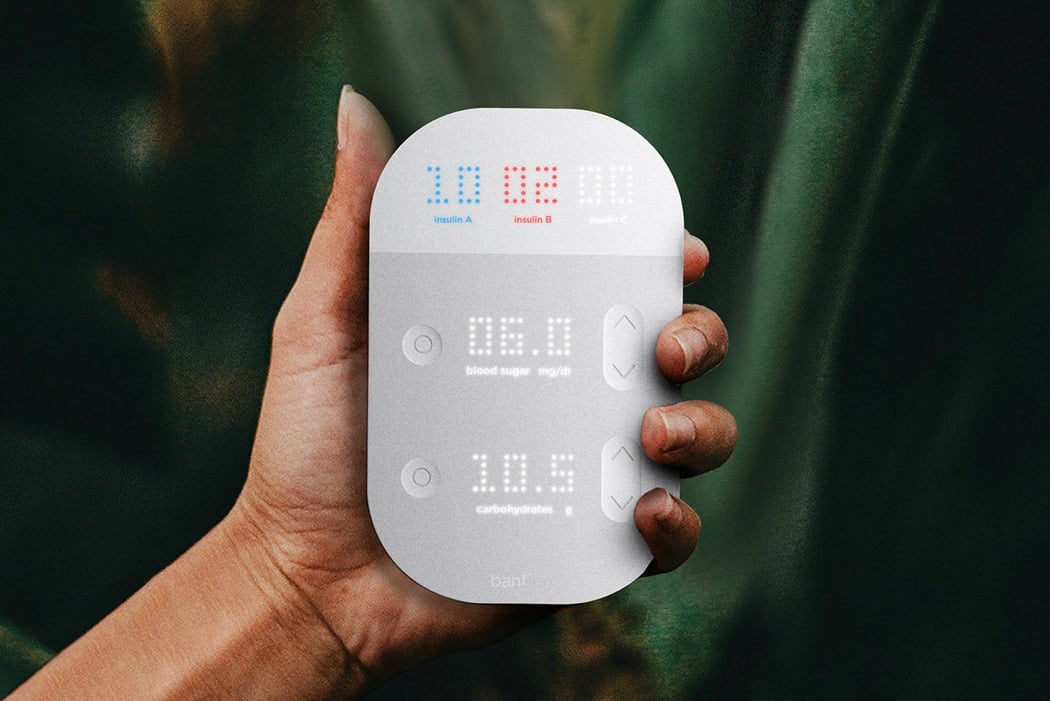
Diabetes impacts the lives of individuals, globally. However, in developing countries, the treatment can be far more varied and unreliable; in many rural locations, the pharmacies independently decide what type of insulin they supply, and this can be changed on a regular basis and often without warning, and for the Diabetic, this can mean a lengthy and costly retraining process to calculate the dosage of the insulin that they require.
BANTING eliminates this lengthy process, as it automatically calculates the dosage that the individual requires, aiming to make every kind of Insulin available to all patients. Other key elements needed to be considered for the success of the product, sanitation being a priority; the body of the pens twist to retract the tip of the needle, preventing contamination. Due to BANTING’S intended market, the cost of the device had to be kept to a minimum; the single PCB combined with an LED array and two-part light guide help to achieve this.
Designer: Evan McDougall
Banting is a device designed to save the lives of diabetics in the developing world
Many rural third world pharmacies independently choose which kinds of insulin to supply, meaning the kind of insulin available to diabetics can change without warning. Currently, diabetics who need to change insulin types must undergo costly retraining to calculate their new dosage. Banting allows for any kind of insulin available to be used in the modular system and can calculate the patient’s dosage with whichever kind of insulin is available.
Paying homage to Dr. Banting
Dr. Fredrick Banting and his colleagues Dr. Best and Dr. Collip were the first people to discover that insulin deficiency was the root cause of diabetes. The three doctors selflessly gave their patents for the first synthetic insulin to the University of Toronto so that it would not fall into the hands of large pharmaceutical companies who could then overcharge and delay production of the lifesaving drug. Nearly 100 years after their discovery, insulin is still out of reach of many in the developing world due largely to the greed of the same large pharmaceutical companies which Banting, Best and Collip fought to deter. Similarly, the goal of this project is to re-democratize lifesaving diabetes technology by undercutting Big Pharma and the proprietary restrictions they have set in place.
Different types of insulin have dramatically different effects on blood sugar levels.
Each kind of insulin will lower blood sugar levels by the same amount but over a different period of time. After diagnosis, each diabetic’s dosage of insulin can take weeks to refine and is usually a combination of a long and short acting insulin. Banting aims to make all kinds of insulin useable to diabetics who do not have consistent access to the kinds of insulin they know how to use.
People with chronic diseases don’t want to be reminded that they are sick
The CMF treatment of Banting was meant to look clean and discrete without looking overly medical when the device is not in use.
Sanitation is a top priority for any medical device, especially in the developing world
The three insulin pens twist to expose the needle through the permeable membrane at the tip of the insulin pen. This innovative design feature prevents contamination of the needle and helps to keep it sanitary.
It was imperative to design Banting in a cost efficient manner
Banting utilizes an LED array with a two part light guide and a single PCB to cheaply and efficiently display crucial information. A metallic screen print creates crisp lines for the LEDs and allows for more customization. The screen print allows for the lettering to easily be changed to accommodate different languages and units depending on the region the device is going to, without having to re-tool molds’.
Cost and usability were delicately balanced
Using only capacitive touch buttons allows Banting to be more durable and produced more inexpensively than comparatively fragile moving buttons. With the LED array being invisible when off, user guidance leads the patient through the necessary steps in an intuitive way, without requiring a costly and power-hungry screen.